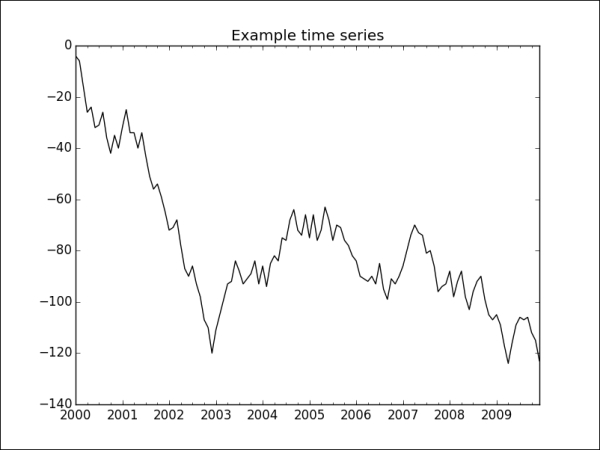Pandas comes with great support for plotting, and this holds true for time series data as well.
As a first example, let's take some monthly data and plot it:
>>> rng = pd.date_range(start='2000', periods=120, freq='MS') >>> ts = pd.Series(np.random.randint(-10, 10, size=len(rng)), rng).cumsum() >>> ts.head() 2000-01-01 -4 2000-02-01 -6 2000-03-01 -16 2000-04-01 -26 2000-05-01 -24 Freq: MS, dtype: int64
Since matplotlib is used under the hood, we can pass a familiar parameter to plot, such as c for color, or title for the chart title:
>>> ts.plot(c='k', title='Example time series') >>> plt.show()
The following figure shows an example time series plot:

We can overlay an aggregate plot over 2 and 5 years:
>>> ts.resample('2A').plot(c='0.75', ls='--') >>> ts.resample('5A').plot(c='0.25', ls='-.')
The following figure shows the resampled 2-year plot:

The following figure shows the resample 5-year plot...



